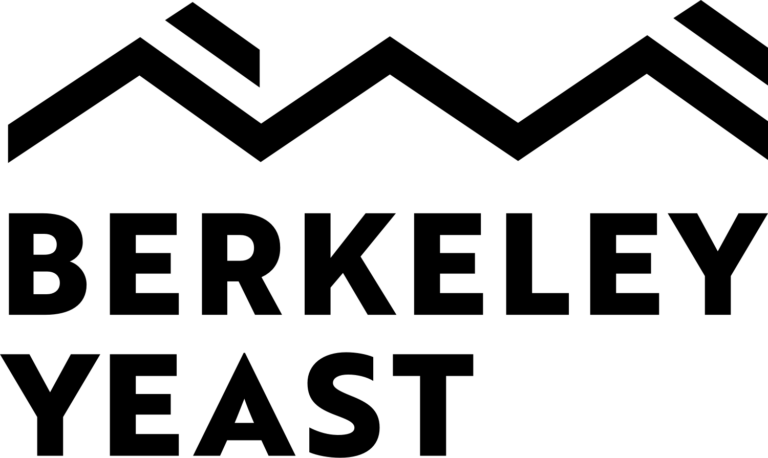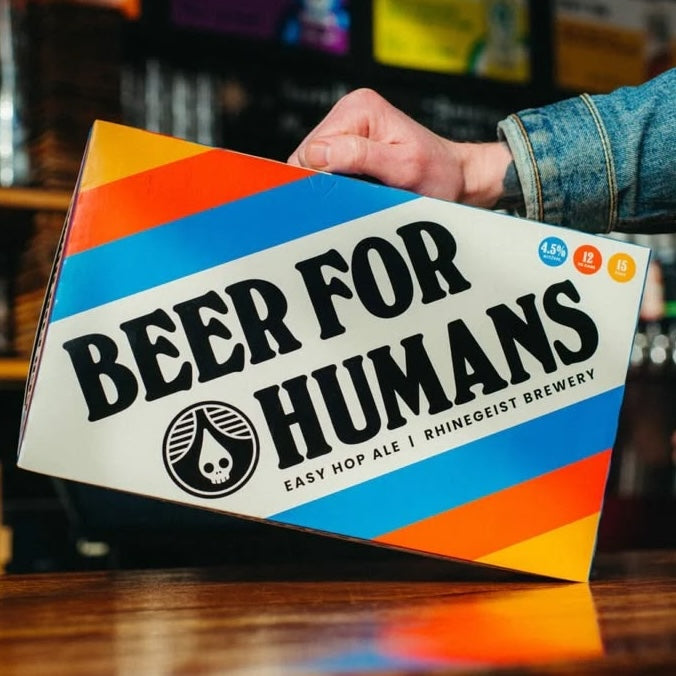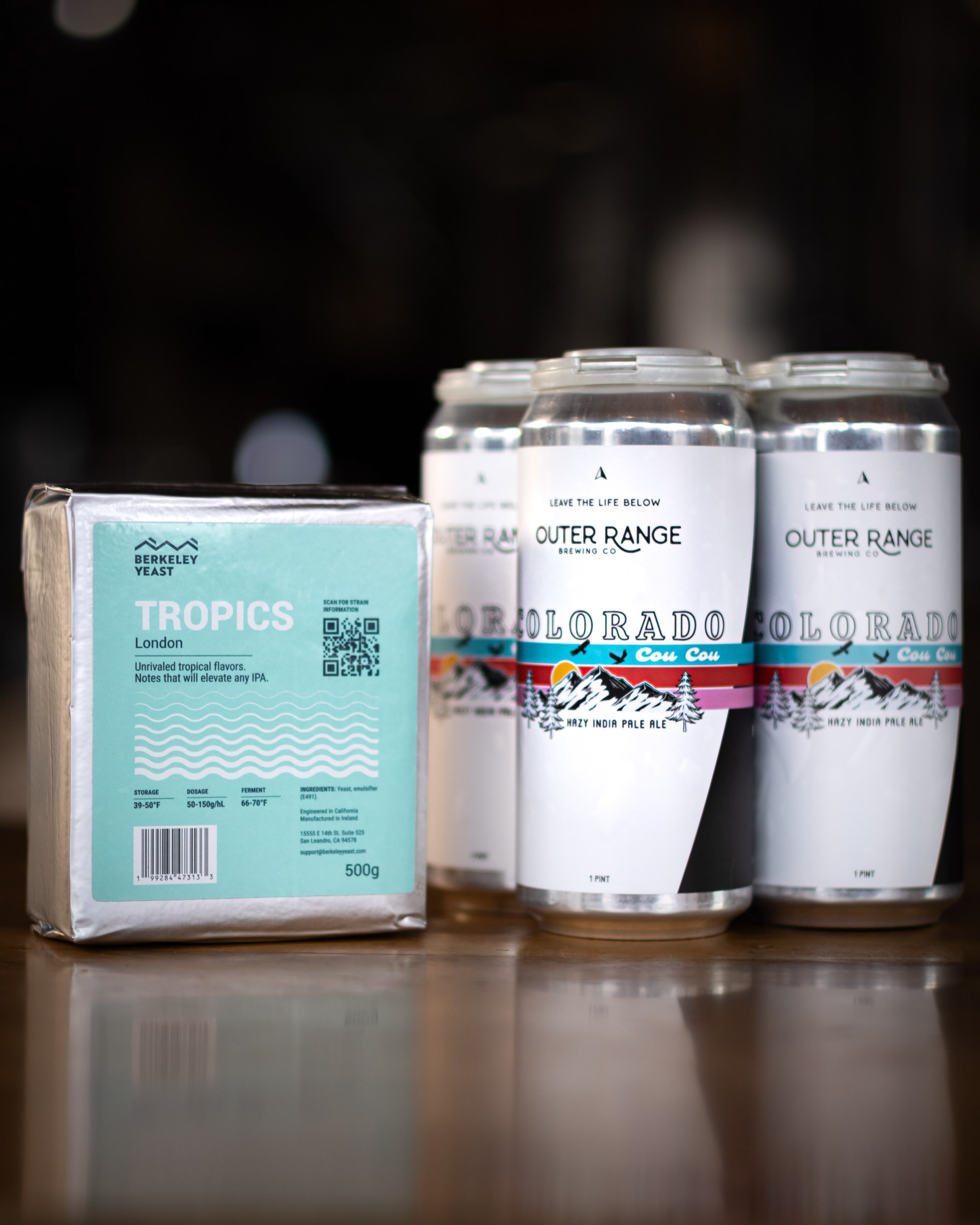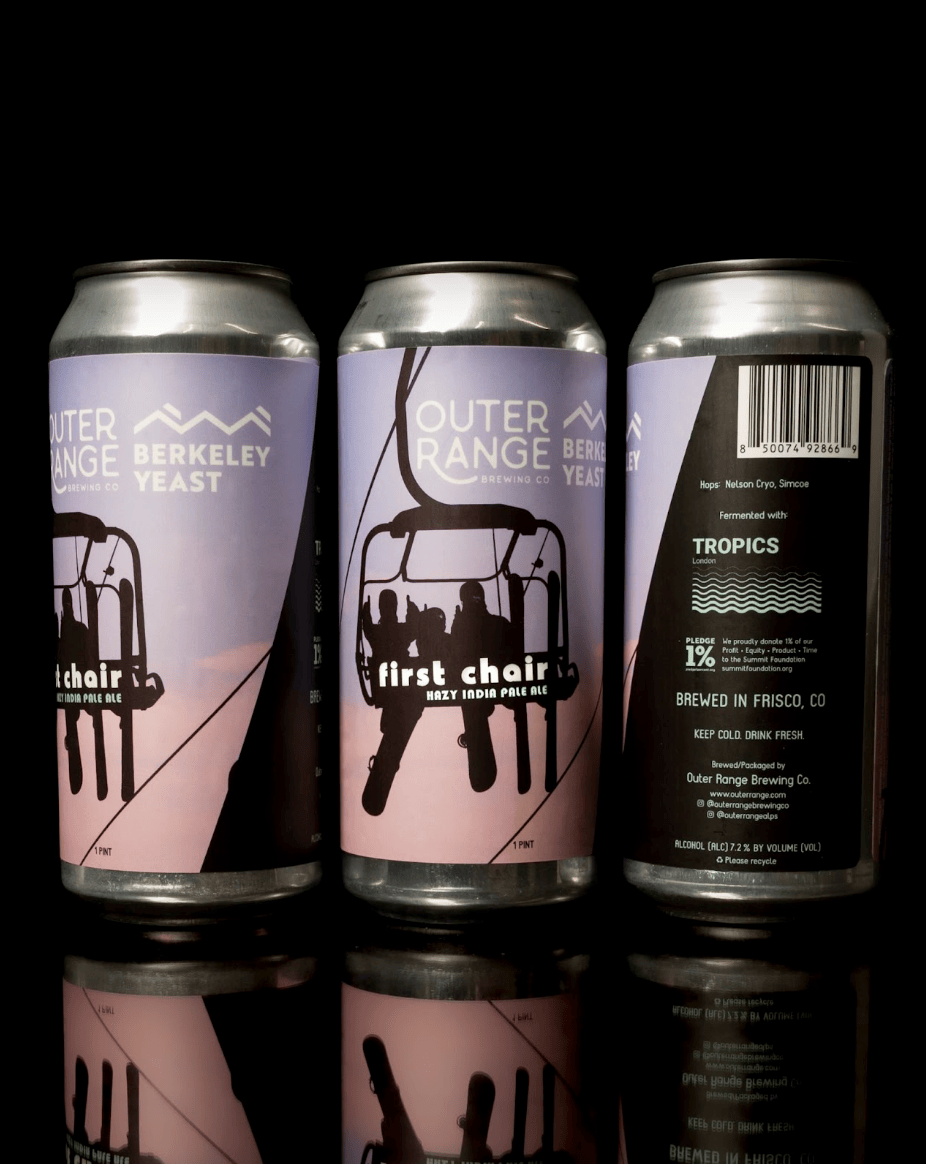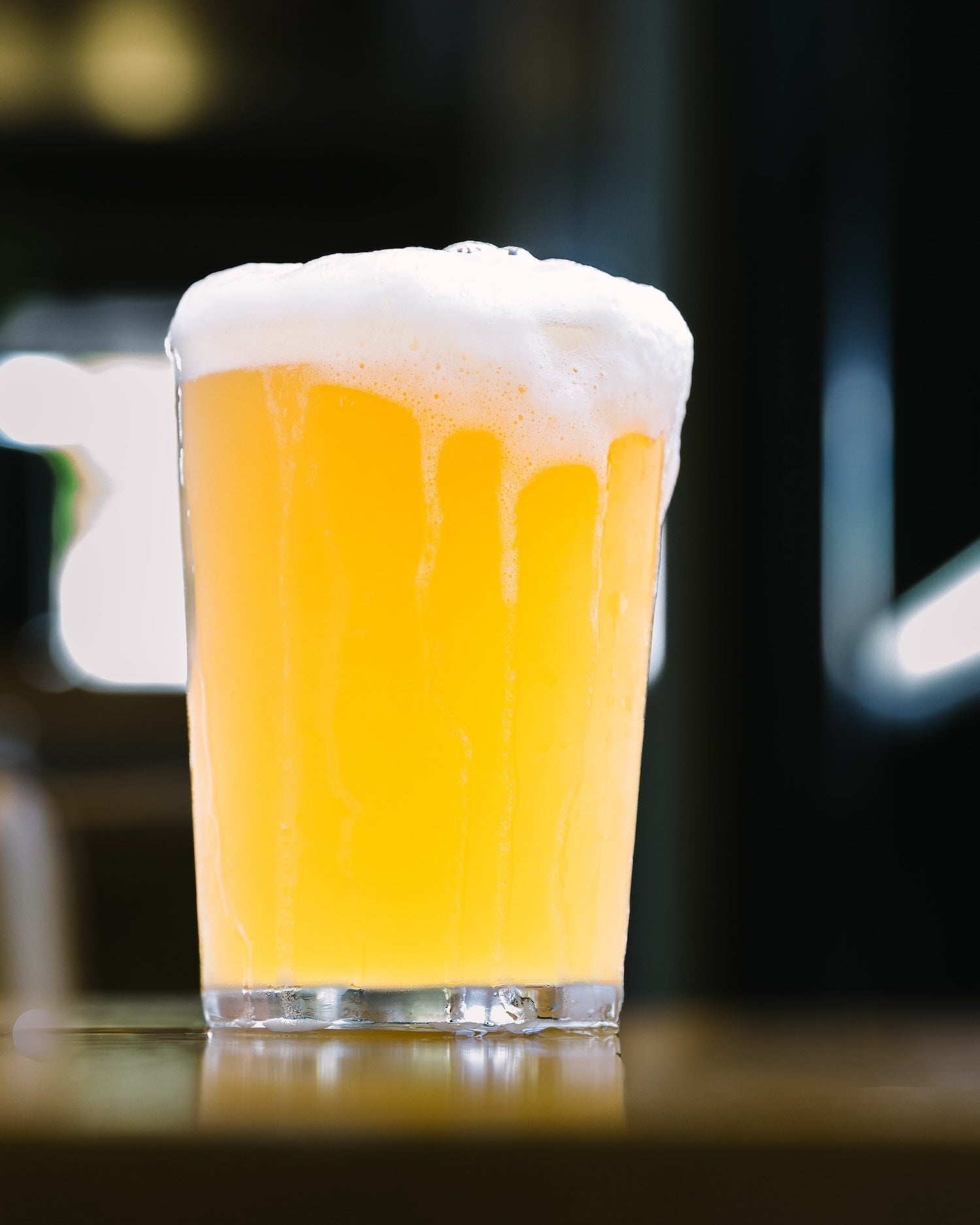Over the last decade, boom-and-bust cycles have defined the IPA category. Sour IPAs, overly bitter palate wreckers, and bone-dry brut IPAs have mostly disappeared, a dry-hopped gold rush that didn’t quite pan out.
Session IPAs also fizzled out, even though the concept seemed like a certain winner. Drop an IPA’s alcohol by volume to a more restrained 4 or 5 percent, keep flavor and aromatics high, and count the profits. Outside of Founders All Day IPA, many session IPAs were too dry and thin to support hop bitterness.
“The hard thing about making an IPA that’s sessionable and still tastes hoppy is getting the right balance,” says Cole Hackbarth, the vice president of brewing operations for Rhinegeist Brewery in Cincinnati, Ohio. Abrasiveness is no selling point for a beer designed for drinkability. Rhinegeist recognized this in 2020 when it formulated Mathlete, a health-minded 115-calorie IPA packing 4 percent ABV.
“How do you get fruity aromas without using hops in the traditional sense?” Hackbarth says. The solution: Rhinegeist fermented Mathlete with Superbloom, a strain that Berkeley Yeast genetically modified to create the floral, citrusy notes of Cascade hops. “We were able to leave behind the green, bitter astringency of hops and bring the top-note fruit aroma,” says Hackbarth.

Rhinegeist’s Beer For Humans. An “Easy Hop Ale”. Photo courtesy of Rhinegeist Brewery.
Successfully taking a beer from concept to reality requires great skill and high-quality raw materials, merging scientific know-how with nature’s bounty. But sometimes the pantry of hops, commercial yeasts, and grains is limiting. Berkeley Yeast uses gene-editing technology to design yeast strains that eliminate recipe roadblocks, unlocking aromatic potential
“We give brewers more of the flavors they want and less of the flavors they don’t want,” says Charles Denby, the CEO and cofounder of Berkeley Yeast in San Leandro, California.
How Academic Inquiry Led to the Birth of Superbloom and Berkeley Yeast
Scientific discoveries stem from curiosity, rigorous investigation, and a willingness to explore, and embrace, the unknown. In the mid-2010s, Denby was a postdoctoral researcher at the University of California, Berkeley, genome-editing yeast to biosynthesize terpenes, a group of organic compounds, to generate sustainable biofuels. Denby homebrewed beer too; terpenes, he realized, also gave hops their signature flavor. Perhaps bioengineered yeast could release hop-like aromatics during fermentation, lessening brewers’ reliance on hops? “I’m a sustainability nerd at heart,” Denby says.
Denby and labmate Rachel Li started their academic side project by leafing through literature on impactful hop terpenes. “Cascade was the top-selling hop in U.S. craft beer, and back in the 1980s, USDA scientists discovered the primary flavor determinants,” Denby says. “They were terpenes that we could coax yeast to biosynthesize,” Denby says. If you’ve ever sipped a Sierra Nevada Pale Ale, you’ll recognize Cascade’s signature pop of grapefruit and pine that’s provided by the terpenes linalool, geraniol, and citronellol. Denby and Li selected Chico yeast, a clean-fermenting strain commonly used to make pale ales and West Coast IPAs, for their bioengineering experiment. “Chico is a really good vehicle for showcasing flavors,” Denby says.

The Berkeley Yeast Pilot Brewery, designed for flexibility, throughput, and control.
They created around 50 different strains, brewing small test batches of beer, before arriving at the ideal blend of terpenes that replicated dry-hopping with Cascade. In 2017, Denby, Li, and biologist Nick Harris cofounded Berkeley Yeast. The first commercial strain was that proof of concept, better known as Superbloom. Initial expectations were fueled by IPA-in-the-sky exuberance. If, say, hop farmers grew and sold $100 million worth of Cascade annually, then replacing it with Superbloom would be a no-brainer for brewers.
“Turns out that it’s a bit unrealistic to expect brewers to switch their primary source of flavor from hops to yeast overnight,” Denby says, laughing. Many large breweries have hop contracts that last for four or five years; switching on the fly is economically unfeasible. Fermenting change takes time. “We started to see brewers using Superbloom in clever ways to get desirable hop flavor and aroma,” Denby says. “The first successful use cases were situations where brewers could get the yeast to do something even better than what you can achieve with hops.”
Alcohol is a solvent, and a lower-alcohol beer will extract less flavors and aromas during dry hopping. The process will also add unwanted bitterness and harshness. Using Superbloom in, say, a session IPA can deliver an elegant hop character without the astringent downside.
“It builds this nice background hop character that works great as a boost in a pale ale or IPA,” says Jason Davis, an R&D brewer at Berkeley Yeast. He has tinkered with test batches, brewing a simple recipe of two-row malt—a foundational grain for making beer—and a touch of no-frills bittering hops. “It was pretty eye-opening,” he says. “It tasted like it was dry-hopped with one to two pounds of hops per barrel.”
The aromatic impact influences a brewery’s bottom line. “It’s kind of like free flavor,” says Hackbarth of Rhinegeist.
Superbloom Can Help Make a Broadly Appealing Hoppy Beer
In today’s fast-moving beer market, trends and tastes evolve on an accelerated evolutionary timeline. The moment of low-calorie IPAs quickly passed because of the difficulty in making a balanced, drinkable beer. “Being able to have a few beers and not be drunk is important, but not at the expense of flavor,” Hackbarth says.
Mathlete was a seasonal beer that was a big hit with the staff. When Rhinegeist decided to revamp Charitable Suds, its program that benefits nonprofits around southwest Ohio, the goal was to link the initiative to a beer, one that could be broadly appealing.
“This was a perfect opportunity to reimagine Mathlete,” Hackbarth says. Removing the low-calorie restriction would let Rhinegeist tweak the body, alcohol content, and hop character, while also retaining “everything we learned from Mathlete about delivering hoppy aroma and flavor without that heavy, harsh bitterness.”
In spring 2023, Rhinegeist unveiled the bright and crisp Beer for Humans, a 4.5 percent ABV ale with low bitterness and an elevated citrusy profile. The brewery calls it an “easy hop ale,” the language allaying the fears of drinkers turned off by too much bitterness. “We’re trying to make craft beer less intimidating,” says Rhinegeist CEO Adam Bankovich. “If you want a beer at the end of the day, it’s accessible. Beer for Humans is my go-to happy hour beer.”

Rhinegeist’s Beer For Humans. Photo courtesy of Rhinegeist Brewery.
Beer for Humans is also the new name of Rhinegeist’s charitable arm, and drinkers can scan a QR code linking to the organizations that the brewery supports. Customers can also read about the initiative on the back of a Beer for Humans 15-pack, priced competitively (around $18.99) to spur trial. Superbloom helps Rhinegeist achieve a competitive price point without sacrificing big aroma.
“It’s a great way to achieve different flavor combinations that typically would have been more expensive,” Bankovich says.
During the late-2010s, brewers added hops to brew kettles and fermenters with abandon, and the $16 IPA four-pack ballooned to $18, $20, $24. There was seemingly no limit to what customers would pay for intense aromatics. Those heady days are done. Drinkers are clutching credit cards a little tighter.
“There’s always the beer math that the shopper does, right?” Bankovich says. “What am I paying for? What am I getting from it?”

Inside the taproom at Rhinegeist. Photo courtesy of Rhinegeist Brewery.
Moreover, hops are an agricultural resource with variability in quality and quantity, factors adversely impacted by climate change. “It’s kind of magical that every single time you grow hops, they come out a little bit different,” Denby says. But for breweries seeking scale and batch-to-batch brand consistency, that’s not necessarily desirable. A bioengineered yeast strain like Superbloom can give brewers a guaranteed aromatic starting point for a range of styles, from the blonde ale to West Coast pilsner, cold IPA, American wheat ale, and English bitter.
At the molecular level, brewing yeast is a cell, just like a plant cell, and it has all the capability needed to make the exact same flavor compounds produced by fragrant fruits such as mangos, strawberries, and oranges, as well as hops. “We’re creating technology that helps brewers precisely control flavor,” Denby says. “What gets us excited is when our technology helps brewers create beers they couldn’t make with traditional ingredients.”
By Joshua M. Bernstein
